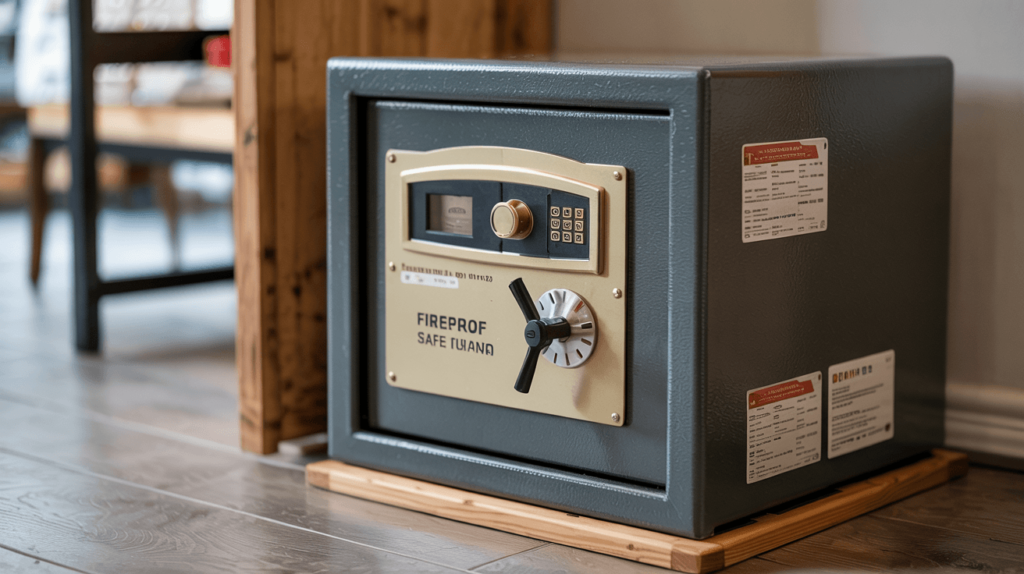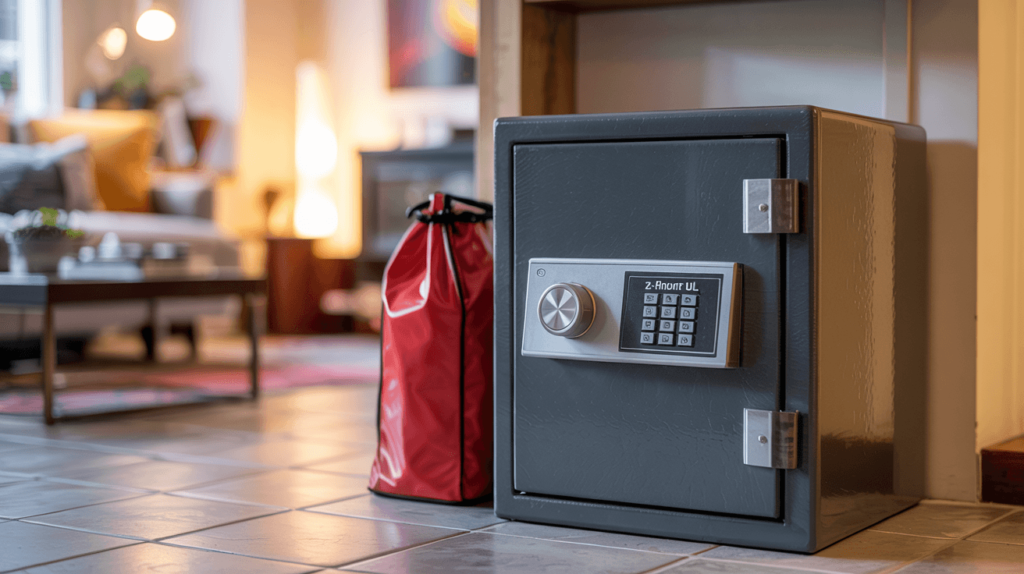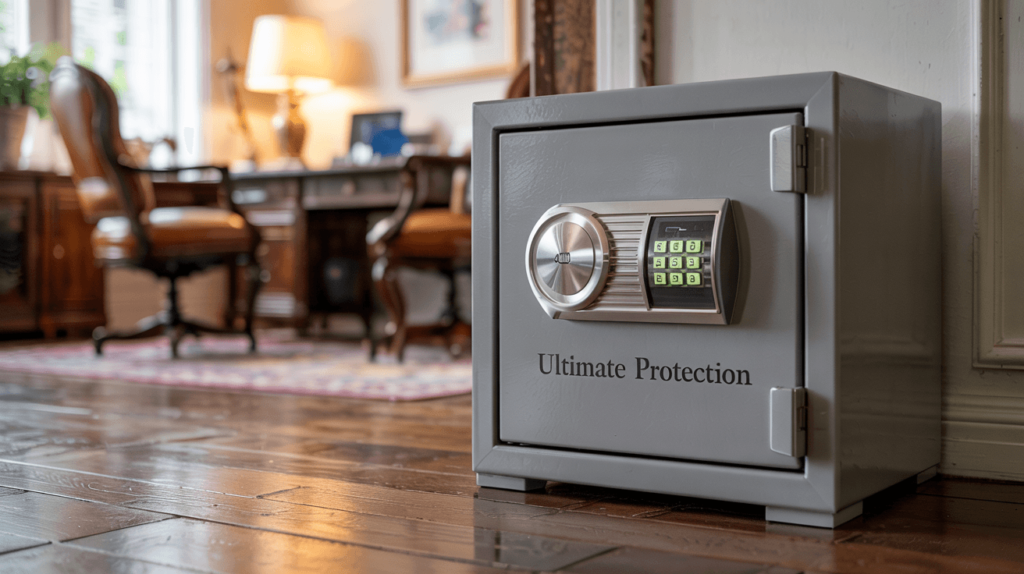In a world where unforeseen disasters can strike at any moment, safeguarding your valuables is not just prudent—it’s essential. A fireproof safe box offers unparalleled protection against flames, theft, and water damage, ensuring critical items like documents, heirlooms, and electronics survive crises. This article explores how these safes work, how to choose the right one, and why they’re a non-negotiable investment for homes and businesses alike.
1. What Is a Fireproof Safe Box?
A fireproof safe box is a fortified container engineered to withstand extreme heat while protecting its contents. Unlike standard safes, these units use fire-resistant materials like ceramic fiber and intumescent seals that expand under heat to block flames and smoke. But here’s the kicker: Many models also offer waterproofing and advanced locking mechanisms, making them a multi-threat solution.

Key components include:
- Fire-Resistant Insulation: Layers of ceramic or gypsum to delay heat transfer.
- Intumescent Seals: Expand at 356°F, sealing gaps to keep smoke out.
- Locking Systems: Biometric scanners, digital keypads, or dual-key mechanisms.
| Fireproof Safe Types | Best For | Fire Rating |
|---|---|---|
| UL Class 125 | Paper documents, cash | 1,700°F for 1 hour |
| UL Class 150 | Digital media, USBs | 1,700°F for 1 hour |
| Dual Fire/Waterproof | Electronics, photos | 2-hour fire + IP68 |
2. How Does a Fireproof Safe Box Work?
Fireproof safes rely on science to outlast blazes. What’s the real story? The insulation absorbs heat, slowing temperature rise inside. Intumescent seals expand to seal gaps, while moisture in the insulation turns to steam, cooling the interior. For example, a UL Class 125 safe keeps internal temps below 350°F for 1 hour—enough to protect paper from charring.
Lock mechanisms add another layer of security. Biometric models scan fingerprints in seconds, while dual-key systems require two authorized users. Ready for the good part? Smart safes send alerts to your phone if tampered with or exposed to heat.
Case Study: A California law firm salvaged client contracts stored in a 2-hour fireproof safe after a wildfire destroyed their office.
3. Why Do You Need a Fireproof Safe Box?
Home fires occur every 88 seconds in the U.S., and 40% of businesses never recover after a major fire. This is where it gets interesting: A fireproof safe isn’t just about survival—it’s about compliance. Insurers often require certified safes to cover high-value items.

Benefits include:
- Document Protection: Wills, deeds, and passports stay intact.
- Electronics Safety: Media-rated safes shield hard drives from magnetic fields.
- Insurance Discounts: Up to 20% premium reductions for UL-certified units.
| Risk Mitigation | Impact |
|---|---|
| Fire Damage Prevention | Saves $15k+ in document recovery |
| Theft Deterrence | Reinforced steel resists crowbars |
4. What Are the Best Fireproof Safe Box Types?
Choose based on your needs:
- Wall-Mounted Safes: Discreet but limited to smaller items.
- Floor Safes: Heavy-duty, often fire + waterproof.
- Media Safes: Protect hard drives (UL Class 150).
But wait—there’s more: Hybrid models like the SentrySafe SFW123DSB offer fire, water, and theft protection under $500.
| Top Models | Price | Features |
|---|---|---|
| Honeywell 1104 | $220 | 1-hour fireproof, key lock |
| Liberty Safe Franklin 30 | $1,999 | 90-minute fire, biometric |
| First Alert 2096DF | $150 | Compact, dual-key |
5. How to Choose the Right Fireproof Safe Box?
Start by assessing what you’ll store. Pro tip: Use the “double capacity” rule—if you need 1 cubic foot, buy 2. Prioritize UL or ETL certifications over vague “fire-resistant” claims.
Budget breakdown:
- Under $300: Basic paper/document protection.
- 300–300–1,000: Media-rated + waterproofing.
- $1,000+: Commercial-grade with smart features.
| Certification | Purpose |
|---|---|
| UL Class 125 | Paper, cash |
| UL Class 150 | Electronics, film |
| JIS S1037 | Japanese industrial standard |
6. Where Should You Install a Fireproof Safe Box?
Avoid garages or attics where temperatures fluctuate. Think about it: Basements or interior closets offer stable environments. Anchor floor safes to concrete using expansion bolts—thieves can’t steal what they can’t lift.
For businesses, install safes in server rooms or areas with sprinkler systems.
7. How to Maintain a Fireproof Safe Box?
Inspect seals annually for cracks. Clean electronic locks with isopropyl alcohol to prevent stickiness. Here’s a pro move: Test fire resistance by placing a thermometer inside during a controlled burn (e.g., using a heat gun).
8. Can a Fireproof Safe Box Survive a Major Fire?
While no safe is invincible, a 2-hour UL-rated model can survive most house fires. The reality: Wildfires exceeding 2,000°F may compromise cheaper units. Pair safes with fireproof document bags for added security.

9. Are Fireproof Safes Also Waterproof?
Many are! Look for IP68 ratings indicating 48-hour submersion protection. Case in point: The Honeywell 2104 survived 72 hours underwater during Hurricane Sandy tests.
10. How Do Fireproof Safes Compare to Bank Vaults?
Bank vaults offer higher security but lack accessibility. The trade-off: Fireproof safes let you retrieve items instantly, while banks charge 100–100–500/year for limited access.
11. What Are Common Mistakes to Avoid?
Overloading a safe strains hinges—stick to 75% capacity. Using factory codes like “0000” invites hackers. Act now: Set unique PINs and change them biannually.
12. How to Test Your Fireproof Safe Box’s Efficiency?
Conduct annual drills:
- Use a heat gun to simulate fire exposure.
- Time how long the internal temp stays below 350°F.
- Check seals for post-test integrity.
13. What Are the Latest Innovations in Fireproof Safes?
AI-driven models like the Yale Smart Safe adjust internal humidity during fires. Solar-powered units eliminate cords, and graphene insulation cuts weight by 40%.
14. How Much Does a High-Quality Fireproof Safe Cost?
Expect to invest $500+ for reliable protection. For example:
| Model | Price | Features |
|---|---|---|
| SentrySafe SFW123DSB | $450 | Fire + water + digital lock |
| Gardall MFS-4114 | $1,200 | 2-hour fire, dual keys |
15. Can You Build a DIY Fireproof Safe Box?
DIY options exist but lack certifications. Use fireboard, steel sheets, and silicone seals. Proceed with caution: Homemade units rarely survive professional testing.
FAQ Section
Q1: What is a fireproof safe box?
A secure container designed to protect valuables from fire damage using heat-resistant materials and seals.
Q2: How does a fireproof safe protect documents?
Intumescent seals expand under heat to block flames, keeping internal temperatures below 350°F.
Q3: Can I store electronics in a fireproof safe?
Yes, but choose a media-rated (UL Class 150) safe to prevent magnetic damage.
Q4: Are fireproof safes heavy?
Most weigh 100–500 lbs; heavier models deter theft but require professional installation.
Q5: Do fireproof safes need power?
Only electronic locks require batteries; mechanical locks operate key-only.




